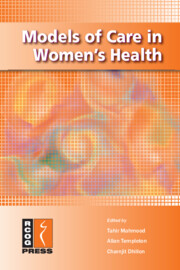Book contents
- Frontmatter
- Contents
- About the authors
- Abbreviations
- Preface
- CHAPTER 1 Setting the scene
- CHAPTER 2 Early pregnancy loss, including ectopic pregnancy and recurrent miscarriage
- CHAPTER 3 Infertility
- CHAPTER 4 Acute gynaecology
- CHAPTER 5 Sexual and reproductive health services
- CHAPTER 6 Termination of pregnancy
- CHAPTER 7 Heavy menstrual bleeding
- CHAPTER 8 Post-reproductive gynaecology
- CHAPTER 9 Urogynaecology
- CHAPTER 10 Vulval disease
- CHAPTER 11 Gynaecological oncology
- CHAPTER 12 Colposcopy services
- CHAPTER 13 Laparoscopic surgery
- CHAPTER 14 Gynaecological risk management
- CHAPTER 15 The role of the clinical director
- CHAPTER 16 Recommendations
- Index
CHAPTER 16 - Recommendations
Published online by Cambridge University Press: 05 July 2014
- Frontmatter
- Contents
- About the authors
- Abbreviations
- Preface
- CHAPTER 1 Setting the scene
- CHAPTER 2 Early pregnancy loss, including ectopic pregnancy and recurrent miscarriage
- CHAPTER 3 Infertility
- CHAPTER 4 Acute gynaecology
- CHAPTER 5 Sexual and reproductive health services
- CHAPTER 6 Termination of pregnancy
- CHAPTER 7 Heavy menstrual bleeding
- CHAPTER 8 Post-reproductive gynaecology
- CHAPTER 9 Urogynaecology
- CHAPTER 10 Vulval disease
- CHAPTER 11 Gynaecological oncology
- CHAPTER 12 Colposcopy services
- CHAPTER 13 Laparoscopic surgery
- CHAPTER 14 Gynaecological risk management
- CHAPTER 15 The role of the clinical director
- CHAPTER 16 Recommendations
- Index
Summary
The RCOG published its document Standards for Gynaecology in 2008 and is being used widely by commissioners, providers and policy makers. It sets out the principles of quality assured gynaecological services. This section has identified some key indicators as exemplars, although we recommend that you make use of the whole document.
Gynaecological services: generic
• For women attending a one-stop clinic, the pre-appointment letter for clinic attendance should provide clear information regarding the procedure and investigations that might be performed.
• Treatment and care should take into account women's individual needs and preferences.
• There should be clear verbal and written information on all aspects of treatment available.
• There should be a clear pathway for referral to local child protection teams, including the management of young people under the age of 13 years who are sexually active.
• A policy should be in place to support and refer potential victims of domestic and sexual abuse.
• There must be a designated reception area, staffed with an appropriately trained receptionist.
• A clearly defined pathway for relevant investigations and referral arrangements should be in place.
• All units should have written advice for training-grade doctors on when to seek help and what procedures they may perform without direct supervision.[…]
Keywords
- Type
- Chapter
- Information
- Models of Care in Women's Health , pp. 150 - 156Publisher: Cambridge University PressPrint publication year: 2009

